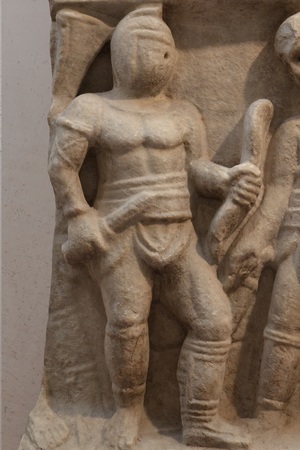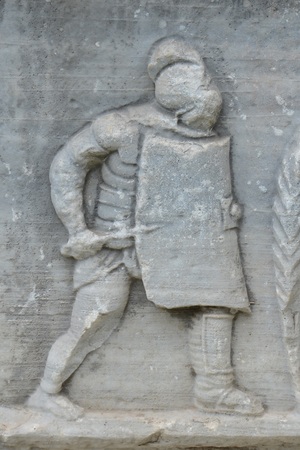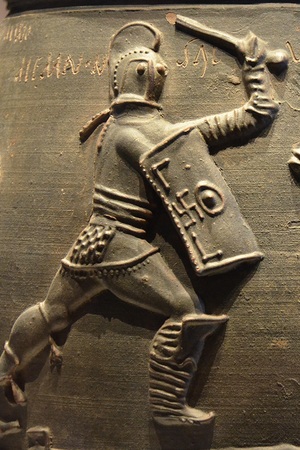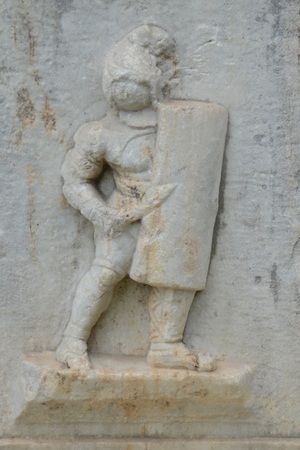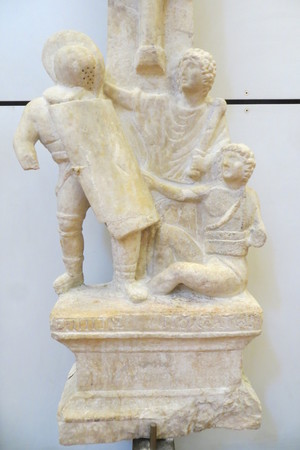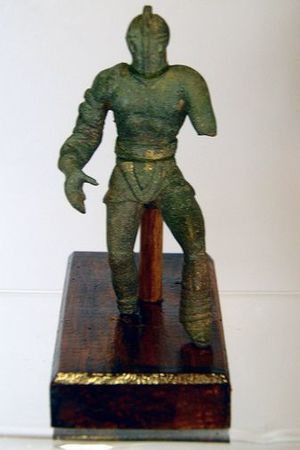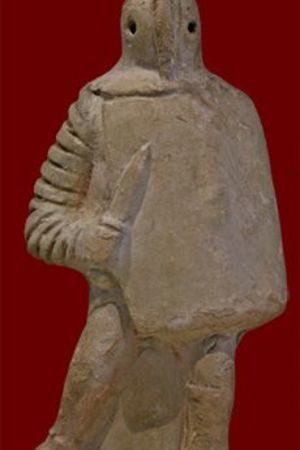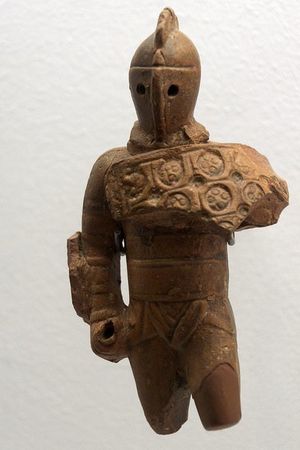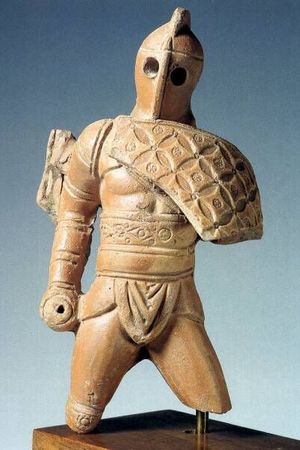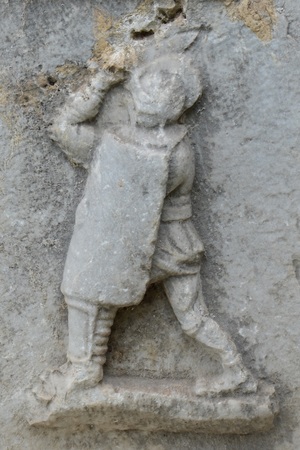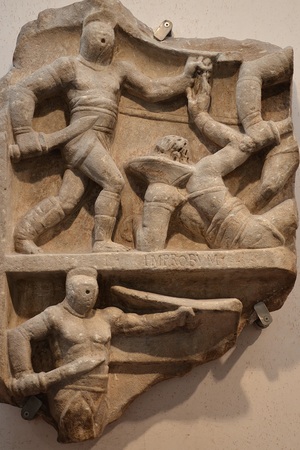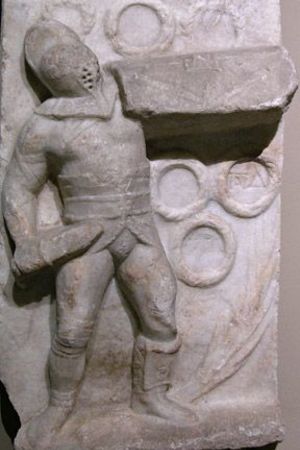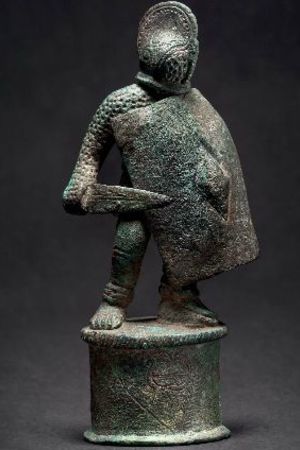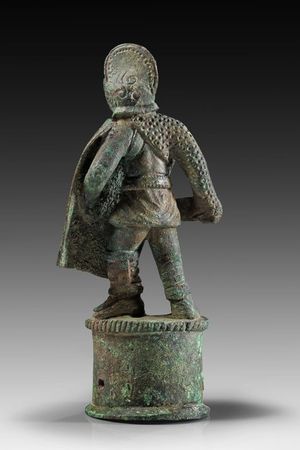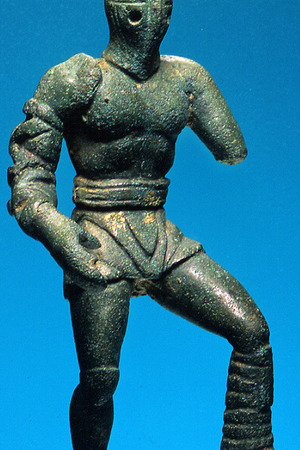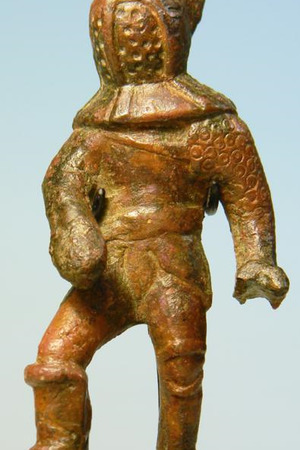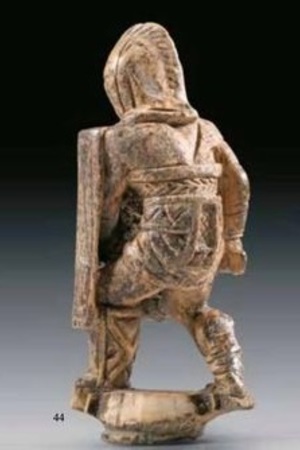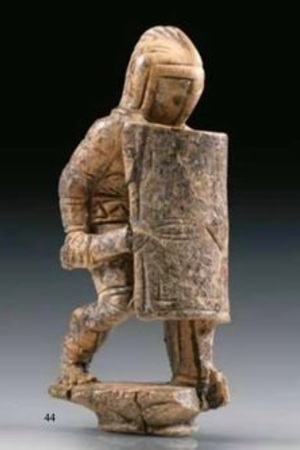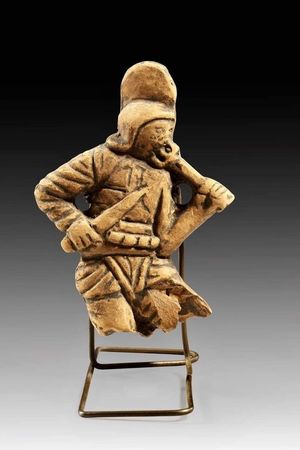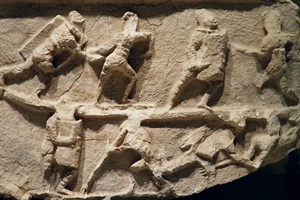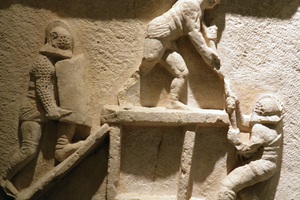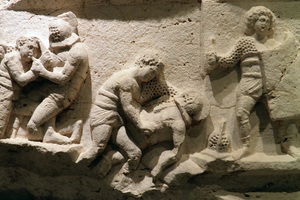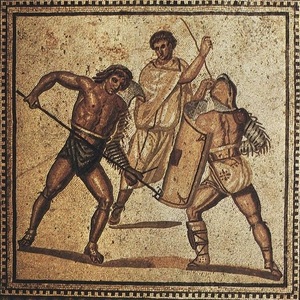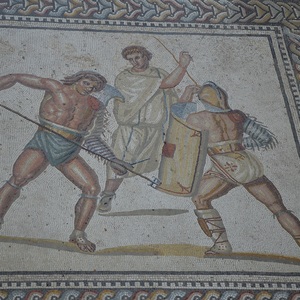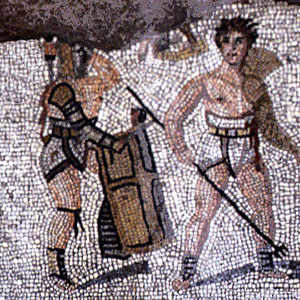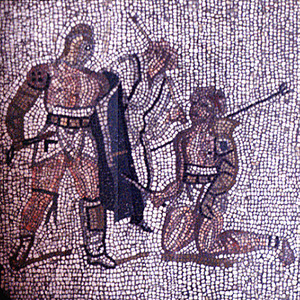Secutor
A Secutor (Latin: secutor — "pursuer") was an ancient Roman gladiator armed with a shield and a gladius (short sword).
The Secutor was also known as contraretiarius — "opponent of the retiarius" or contrarete — "against the net," as the Secutor most commonly faced the retiarius, a gladiator armed with a net and a trident. Some historians describe Secutors as a type of murmillon since they were similarly equipped and differed mainly in the type of helmet they wore.
The Secutor's helmet covered the entire face and had two small eye holes. Unlike the murmillo helmet, the Secutor's helmet lacked grills over the eye holes, but this was sufficient protection, especially against the retiarius’ trident. The helmet was almost round and smooth to prevent the retiarius’ net from catching on it.
Up until the late Roman Empire, Secutors were one of the most popular types of gladiators. Emperor Commodus even performed as a Secutor. Suetonius recounts how, during the reign of Caligula, "five gladiators-retiarii in tunics fought against five Secutors, surrendered without a fight, and awaited death, when suddenly one of the defeated grabbed his trident and killed all the victors." One of the most famous Secutors was Flamma (Latin: Flamma — "flame"). He was from Syria and is remembered for his vast number of arena battles: 34 fights as a Secutor, winning 21, drawing 9, and losing 4. Flamma was granted the rudis (a wooden sword symbolizing freedom) four times, yet he chose to return to the arena each time, serving as an example of a freedman who continued to fight as a gladiator. Flamma died in the arena at the age of thirty.
The Secutor's tactics were vastly different from those of the retiarius. He largely mimicked the murmillo but acted more aggressively. During a duel, the Secutor aimed to get as close to the retiarius as possible to use the advantage of his equipment and its weight in close combat. The retiarius tried either to ensnare his opponent with the net and bring him to the ground or to bide his time, waiting for the Secutor to tire under the weight of his armor.
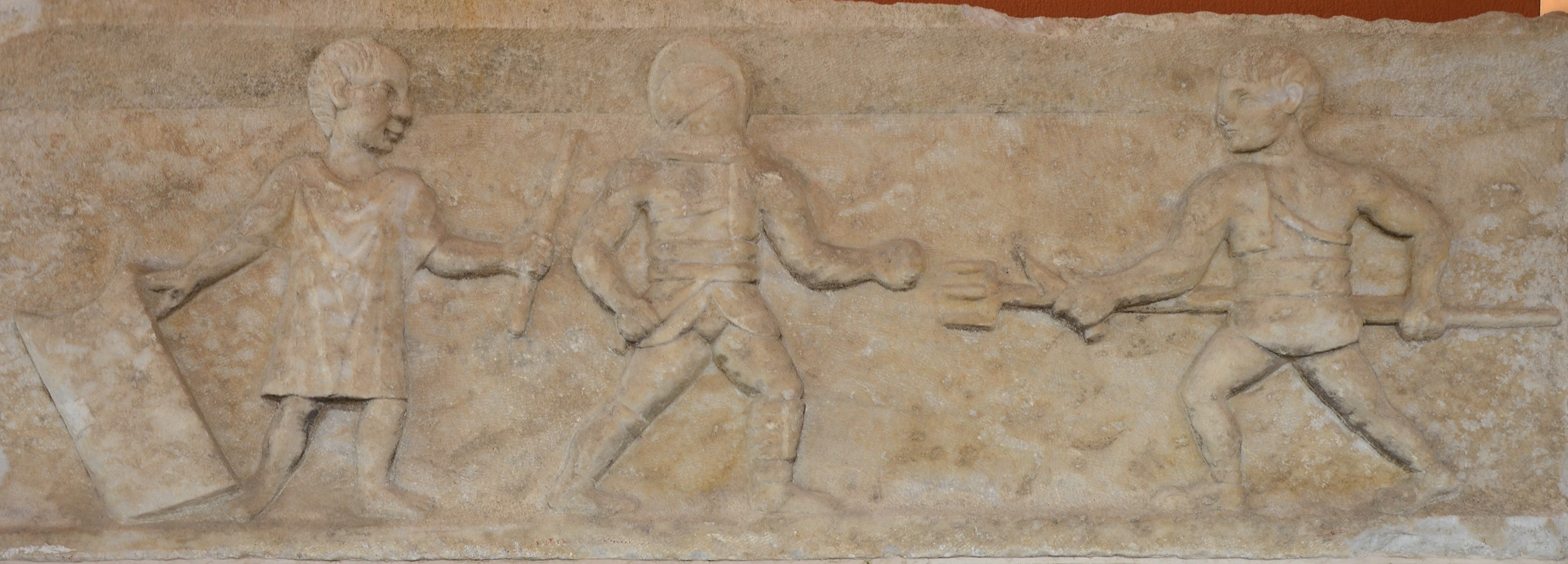 Scene of a Fight Between a Secutor and a Retiarius. Ephesus Museum. Selçuk, Turkey. 1st-3rd century CE.
Scene of a Fight Between a Secutor and a Retiarius. Ephesus Museum. Selçuk, Turkey. 1st-3rd century CE.
Secutor's equipment
Traditionally, gladiators fought on sand, but when reconstructing the battle on a hard surface, it is recommended to use authentic shoes, such as caligae.
Related topics
Gladiator, Helmet, Manica, Ocrea, Balteus, Subligaculum, Gladius, Pugio, Retiarius, Murmillon
Literature
- Andrew Fitzgerald, 10 Famous Gladiators From Ancient Rome // Listverse, April 2, 2013
- Rachael Hanel, Gladiators: Fearsome Fighters // The Creative Company, 2007, ISBN 1583415351

 Gallery
Gallery






